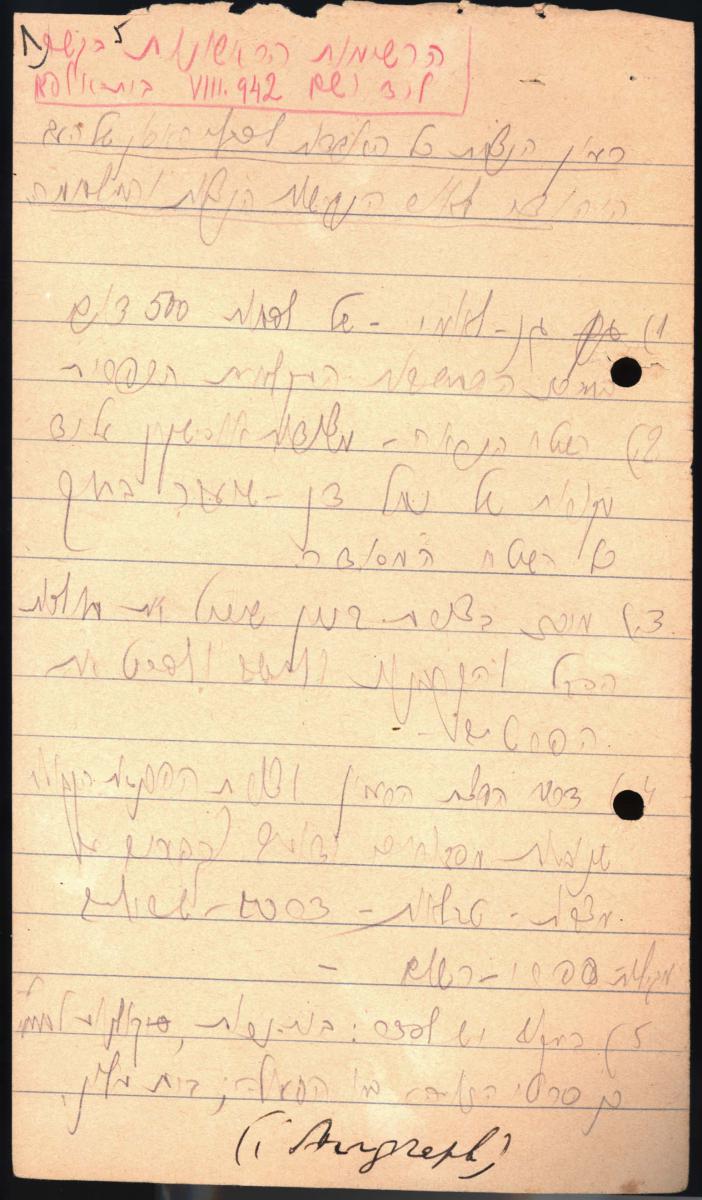

This month marks 80 years since the idea of Yad Vashem – the World Holocaust Remembrance Center – was proposed.
The establishment of an institution or site to commemorate the victims of the Holocaust was formulated back in the darkest days of World War II, in 1942, while the campaign of extermination was still in progress. Many of the Jews, while living in the ghettos or in hiding, wrote diaries and letters, created artworks and film clips, collected documentation in secret archives, and buried documents, testimonies and artifacts in the ground. Even in the forests and concentration camps, the Jews felt the need to collect and document, in order to ensure that the memories and testimonies of them standing up to the Nazis and their collaborators in body and spirit would remain, and that one day the world would give an account for the destruction of the Jewish people. As Rabbi Yitzhak Meir Levin, a member of Agudath Israel, later said in the debate in the Knesset on the legislation of the Yad Vashem Law:
"The day will come and the reckoning will be demanded from all humanity, from all the nations of the world: 'Where were you when a large part of an ancient people, the chosen nation, was destroyed, in a way that has no precedent in the history of the world'"?
Israel's Holocaust Martyrs' and Heroes' Remembrance Authority, as Yad Vashem was originally coined, was the vision of one man, Mordechai Shenhavi. The idea that Shenhavi – a Zionist activist immigrant to Eretz Israel from Odessa, who was living on Kibbutz Mishmar Ha'Emek – came up with was not immediately accepted, because the Yishuv (the renewed Jewish settlement in the Land of Israel) was not yet able to grasp the news about the catastrophe of the Holocaust, or digest the dimensions of the loss of their brothers and sisters in Europe. Only after the WWII ended, at the same time as the Yishuv's struggle for its independence, did Shenhavi resubmit his proposal to the national institutions, and as a result of his tireless activity, the idea of establishing Yad Vashem as a state authority gradually took shape. In August 1942, while he was visiting Kibbutz Beit Alfa, Shenhavi wrote on a sheet of stationery the first notes about the future site: "The idea of commemorating all the losses and the disaster of the Jewish people in light of the Nazi persecutions and the war".
A month later, in September 1942, Shenhavi placed on the desk of the Jewish National Fund (JNF) Board of Directors a plan to declare a "people's enterprise," whose purpose was to "commemorate the Holocaust of the Diaspora, as well as those Jews who fought in the Allied armies " – thus establishing a link between the Holocaust and heroism. The enterprise would strengthen the centrality of the Yishuv, and serve as a tool to expand its relationship with Diaspora Jewry:
"In the Land of Israel that is being built up, the memorial will be erected as a sign and a warning to us and to the peoples outside of us; a witness to the sufferings and bravery of our sanctified brethren; evidence of the fate of a nation without a homeland; a memorial to the communities of Israel that were destroyed to the core."
In the first memorandum Shenhavi sent to the KKL as early as 10 September 1942, he proposed to launch a campaign to collect donations for the construction of a memorial site. According to his plan, this site was to include two pavilions: "The Diaspora Pavilion" and "The Pavilion for the Jewish Soldier." Shenhavi believed that he would be able to raise funds for this purpose, and made sure to point out that some of the donations would be directed to the purchase of land and the rescue of Holocaust orphans. He believed that this action would also be an important factor in the education of the Jewish youth in the United States and in strengthening their attachment to their people. However, due to the hostilities both at home and abroad, his appeal remained an idea at this stage.
On 19 April 1944, the first anniversary of the Warsaw Ghetto Uprising, Shenhavi renewed his attempts to initiate a commemorative site. He even chose a name for the institution: "Yad Vashem – a monument to the murdered." The name had actually been suggested to Shenhavi by the KKL Religious Department Director Rabbi Moshe Burstein back at the end of 1942, and is taken from the book of Isaiah: ″And to them will I give in my house and within my walls a memorial and a name (a 'Yad Vashem΄) ... that shall not be cut off.″
In the name, the physical and spiritual dimensions of the future memorial were combined: the site to be established would be the "Yad" – the physical place where the memorials and documentation would reside – and the "Shem" – the spiritual commemoration through restoring the names of those who were murdered. The memorial was therefore intended to preserve and commemorate the memories of the Jewish victims and communities that were deliberately wiped out by Nazi Germany.











